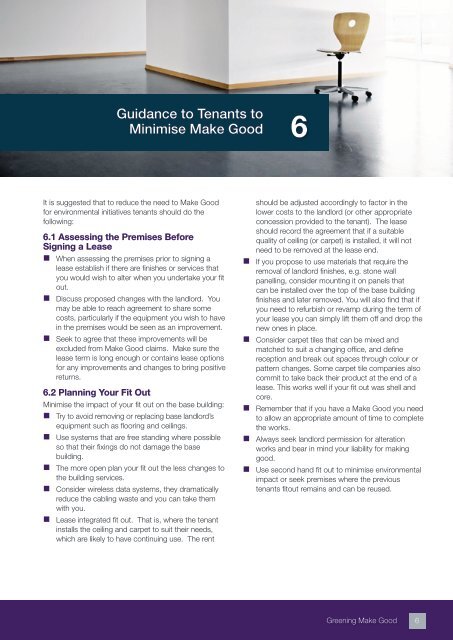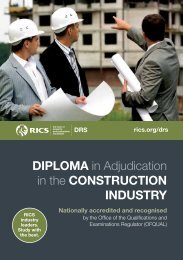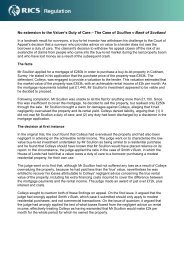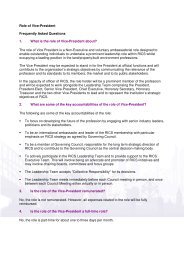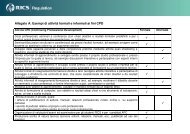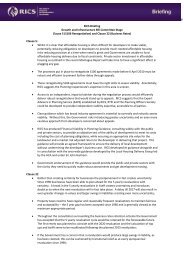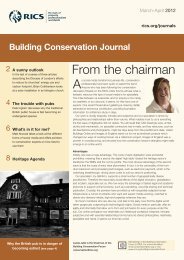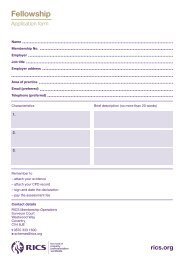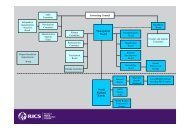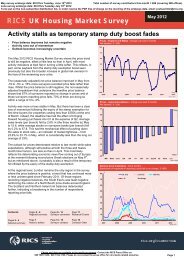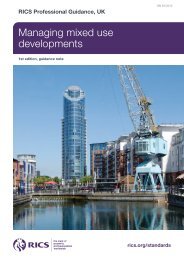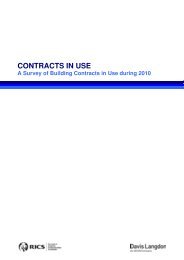You also want an ePaper? Increase the reach of your titles
YUMPU automatically turns print PDFs into web optimized ePapers that Google loves.
Guidance to Tenants to<br />
Minimise <strong>Make</strong> <strong>Good</strong> 6<br />
It is suggested that to reduce the need to <strong>Make</strong> <strong>Good</strong><br />
for environmental initiatives tenants should do the<br />
following:<br />
6.1 Assessing the Premises Before<br />
Signing a Lease<br />
When assessing the premises prior to signing a<br />
lease establish if there are finishes or services that<br />
you would wish to alter when you undertake your fit<br />
out.<br />
Discuss proposed changes with the landlord. You<br />
may be able to reach agreement to share some<br />
costs, particularly if the equipment you wish to have<br />
in the premises would be seen as an improvement.<br />
Seek to agree that these improvements will be<br />
excluded from <strong>Make</strong> <strong>Good</strong> claims. <strong>Make</strong> sure the<br />
lease term is long enough or contains lease options<br />
for any improvements and changes to bring positive<br />
returns.<br />
6.2 Planning Your Fit Out<br />
Minimise the impact of your fit out on the base building:<br />
Try to avoid removing or replacing base landlord’s<br />
equipment such as flooring and ceilings.<br />
Use systems that are free standing where possible<br />
so that their fixings do not damage the base<br />
building.<br />
The more open plan your fit out the less changes to<br />
the building services.<br />
Consider wireless data systems, they dramatically<br />
reduce the cabling waste and you can take them<br />
with you.<br />
Lease integrated fit out. That is, where the tenant<br />
installs the ceiling and carpet to suit their needs,<br />
which are likely to have continuing use. The rent<br />
should be adjusted accordingly to factor in the<br />
lower costs to the landlord (or other appropriate<br />
concession provided to the tenant). The lease<br />
should record the agreement that if a suitable<br />
quality of ceiling (or carpet) is installed, it will not<br />
need to be removed at the lease end.<br />
If you propose to use materials that require the<br />
removal of landlord finishes, e.g. stone wall<br />
panelling, consider mounting it on panels that<br />
can be installed over the top of the base building<br />
finishes and later removed. You will also find that if<br />
you need to refurbish or revamp during the term of<br />
your lease you can simply lift them off and drop the<br />
new ones in place.<br />
Consider carpet tiles that can be mixed and<br />
matched to suit a changing office, and define<br />
reception and break out spaces through colour or<br />
pattern changes. Some carpet tile companies also<br />
commit to take back their product at the end of a<br />
lease. This works well if your fit out was shell and<br />
core.<br />
Remember that if you have a <strong>Make</strong> <strong>Good</strong> you need<br />
to allow an appropriate amount of time to complete<br />
the works.<br />
Always seek landlord permission for alteration<br />
works and bear in mind your liability for making<br />
good.<br />
Use second hand fit out to minimise environmental<br />
impact or seek premises where the previous<br />
tenants fitout remains and can be reused.<br />
<strong>Greening</strong> <strong>Make</strong> <strong>Good</strong> 6


